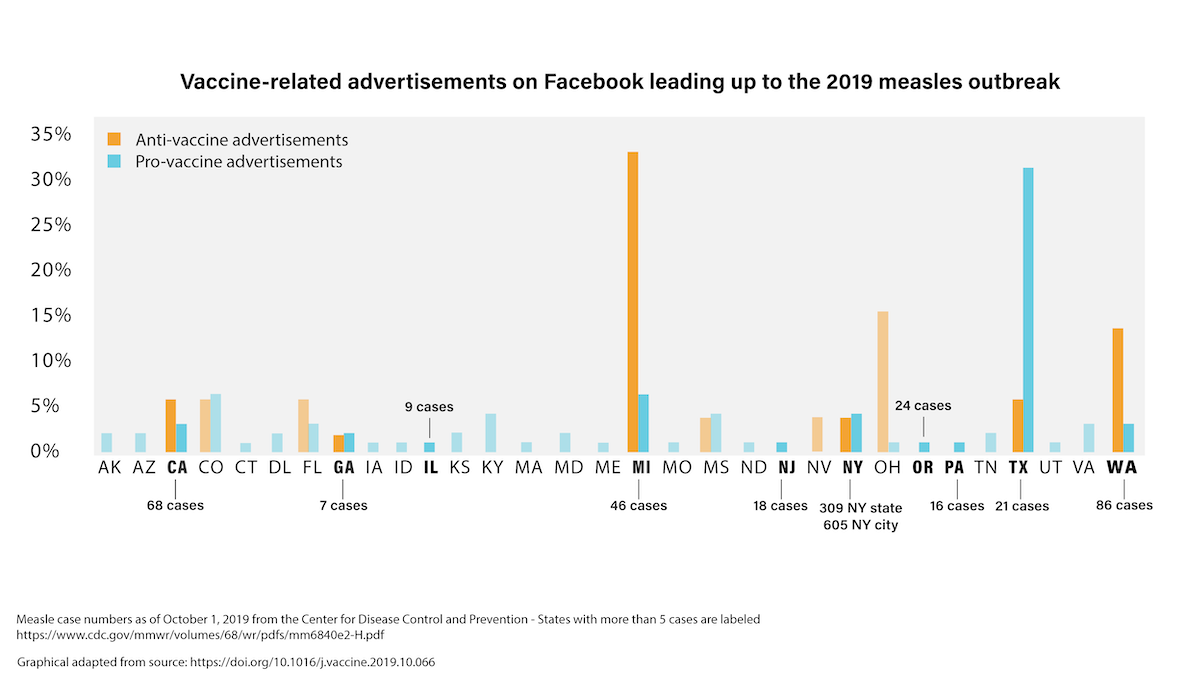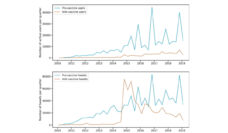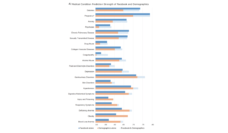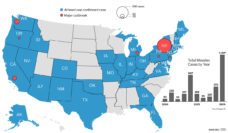In 2019, the United States experienced the worst measles outbreak in over 25 years. Since then, questions have surfaced about the role of social media advertising in spreading vaccine misinformation.
In response to pressure to increase transparency, Facebook launched Ad Library in 2018, which allows anyone to access detailed information about paid advertisements. Details available include who paid for the ad, what period it was active for, and what size and kind of audience was ultimately reached. For the first time, trends in pro-vaccine and anti-vaccine messaging could be compared.
Anti-vaccine messages targeted numerous states in 2018, according to analysis of paid Facebook ads. The figure above shows that several targeted states experienced measles outbreaks the following year, including California, Michigan, Texas, New York, Washington, and Georgia.
Anti-vaccine ads often reported cases of vaccine harm or promoted vaccine choice. Seventy-five percent of anti-vaccine messages targeted female users. Conversely, pro-vaccine advertising, often paid for by local health organizations, was more evenly spread out among states.
Increasing transparency is an important step in identifying misinformation and will continue to help clarify the role that paid advertising plays in trends of vaccine hesitancy and disease outbreak.
Databyte via Jamison, Amelia M., et al. “Vaccine-Related Advertising in the Facebook Ad Archive.” Vaccine, vol. 38, no. 3, 2020, pp. 512–520. Data visualization by Tasha McAbee.














